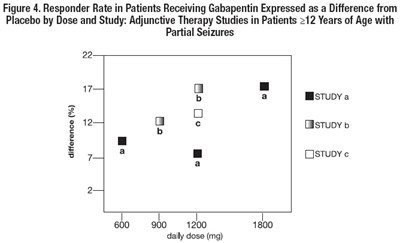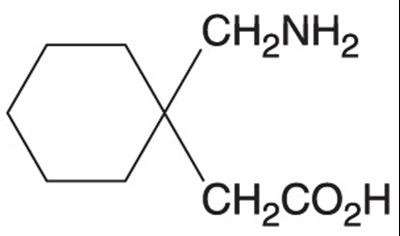Product Images Gabapentin
View Photos of Packaging, Labels & Appearance
Product Label Images
The following 14 images provide visual information about the product associated with Gabapentin NDC 68788-8476 by Preferred Pharmaceuticals Inc., such as packaging, labeling, and the appearance of the drug itself. This resource could be helpful for medical professionals, pharmacists, and patients seeking to verify medication information and ensure they have the correct product.
Gabapentin Tablets 600mg - 38119F2E 33B3 4C3C 99B7 9335D8D280D4 00

Gabapentin Tablets 600mg are generic for Neurontin. Each film-coated tablet contains 600mg of Gabapentin. The tablets are oval, white, scored, and imprinted with "T". They are manufactured by Ascent Pharmaceuticals, Inc. The recommended storage temperature is 23°C (73°F), with excursions permitted up to 30°C (86°F). The medication should be kept out of reach of children. The directions state to use as directed by a doctor and to take one tablet every few hours. It is important to note that federal law prohibits transferring this drug to anyone other than the patient for whom it was prescribed. The package size, expiration date, lot number, batch number, and other details are not available.*
sideeffects - Sideeffects
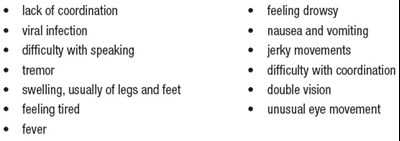
This text describes a range of symptoms related to a possible medical condition. These symptoms include lack of coordination, viral infection, difficulty with speaking, tremor, swelling (usually of legs and feet), feeling tired, fever, feeling drowsy, nausea and vomiting, jerky movements, difficulty with coordination, double vision, and unusual eye movement. It is important to consult with a healthcare professional for an accurate diagnosis and appropriate treatment.*
Table-1 - Table1
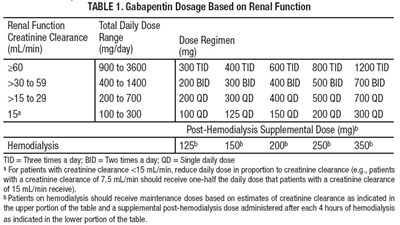
The text provides a table showing the recommended dosage of Gabapentin based on renal function. The table includes different dosage regimens for different levels of creatinine clearance. It also provides supplemental doses for patients on hemodialysis. The text also clarifies the abbreviations used in the table, such as TID (three times a day), BID (two times a day), and QD (single daily dose). The dosage should be adjusted for patients with creatinine clearance below 15 mL/min.*
Table-3 - Table3
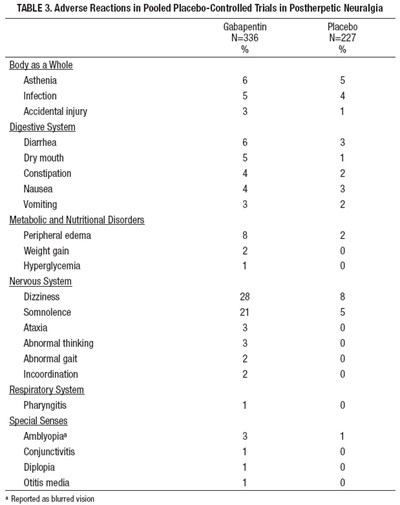
TABLE 3: Adverse Reactions in Pooled Placebo-Controlled Trials in Postherpetic Neuralgia. The table provides the percentages of adverse reactions experienced by patients in the Gabapentin and Placebo groups. The reactions are categorized by body system, including body as a whole, digestive system, metabolic and nutrition, nervous system, respiratory system, and special senses. The table lists various adverse reactions such as asthenia, infection, accidental injury, diarrhea, dry mouth, constipation, nausea, vomiting, peripheral edema, weight gain, hyperglycemia, dizziness, somnolence, ataxia, abnormal thinking, abnormal gait, incoordination, pharyngitis, amblyopia, conjunctivitis, diplopia, otitis media, and blurred vision.*
Table-4 - Table4
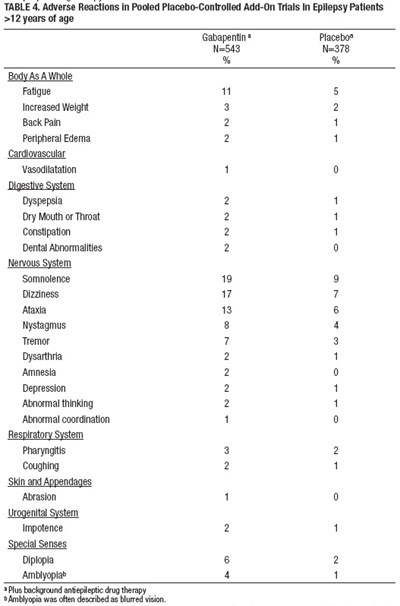
TABLE 4. Adverse Reactions In Pooled Placebo-Controlled Add-On Trials In Epilepsy Patients >12 years of age. The table provides information on the adverse reactions reported in clinical trials involving Gabapentin and placebo. The adverse reactions are categorized into different body systems, including the body as a whole, digestive system, nervous system, respiratory system, skin and appendages, urogenital system, and special senses. Some of the common adverse reactions reported include fatigue, weight gain, back pain, peripheral edema, dyspepsia, dry mouth or throat, constipation, somnolence, dizziness, ataxia, nystagmus, tremor, dysarthria, amnesia, depression, abnormal thinking, abnormal coordination, pharyngitis, coughing, abrasion, impotence, diplopia, and amblyopia (blurred vision). The use of Gabapentin as an add-on therapy to background antiepileptic drug therapy was evaluated. Amblyopia, which is a condition characterized by blurred vision, was frequently reported.*
Table-6 - Table6

This text provides information on controlled PHN (postherpetic neuralgia) studies involving the medication Gabapentin. The table includes details about the duration of the studies, dosages administered, and the number of patients involved. Study 1 had a duration of 8 weeks with a target dose of 3600 mg/day, and 113 patients received Gabapentin while 116 received a placebo. Study 2 lasted for 7 weeks and involved doses of 1800 and 2400 mg/day. Of the 223 patients in this study, 111 received Gabapentin and the remaining patients received a placebo. In total, 336 patients received Gabapentin and 221 received a placebo across both studies. Additionally, the text mentions that the medication was given in 3 divided doses per day (TID).*
clcr - clcr

This text appears to be a formula for calculating a certain value. It seems to involve the variables "age," "weight," and "serum creatinine." The formula suggests that the value obtained is influenced by the age and weight of the patient, as well as their serum creatinine levels. However, without further context or information, it is not possible to determine the exact purpose or application of this formula.*
* The product label images have been analyzed using a combination of traditional computing and machine learning techniques. It should be noted that the descriptions provided may not be entirely accurate as they are experimental in nature. Use the information in this page at your own discretion and risk.





